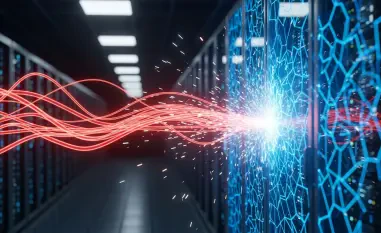In a startling development this September, a severe cybersecurity threat has emerged with the active exploitation of zero-day vulnerabilities in Cisco Adaptive Security Appliance (ASA) and Firepower Threat Defense (FTD) software, which are critical components of network security infrastructure used worldwide. These previously unknown flaws, hidden from both the vendor and the public, have created a dangerous window for attackers to infiltrate systems before defenses can be established. What heightens the alarm is the primary focus of these attacks on government networks, raising significant concerns about the potential for espionage and the theft of sensitive data. The implications are profound, as compromised systems could jeopardize not only national security but also the integrity of critical operations that rely on secure communications. As this situation unfolds, the urgency to understand the nature of these vulnerabilities and the sophistication of the attackers behind them becomes paramount. This issue serves as a stark reminder of the evolving cyber threat landscape, where state-sponsored actors and advanced malware target the very foundations of digital defense. With government entities in the crosshairs, the stakes could not be higher, pushing cybersecurity to the forefront of global priorities.
Unmasking the Zero-Day Vulnerabilities
The vulnerabilities at the heart of this crisis, identified as CVE-2025-20333, CVE-2025-20362, and CVE-2025-20363, affect vital services like VPN and web functionalities within Cisco ASA and FTD software. Two of these flaws are already being actively exploited, while the third stands at a high risk of imminent abuse, with severity ratings ranging from critical to medium. Their potential to allow arbitrary code execution, unauthorized access to restricted endpoints, and persistent malware implantation makes them a pressing concern for any organization relying on these systems. Given their role in securing network perimeters, the exploitation of such flaws can lead to catastrophic breaches, especially for entities handling classified or sensitive information. The fact that these issues were unknown prior to their discovery means that initial defenses were non-existent, leaving systems exposed during the critical early stages of attack campaigns. While patches have now been released by the vendor, the window of vulnerability remains a significant challenge for many.
Delving deeper into the nature of zero-day exploits, their inherent danger lies in the element of surprise they afford attackers. Unlike known vulnerabilities, where mitigations or patches might already exist, zero-days strike without warning, often catching even the most prepared organizations off guard. In this case, the affected software is integral to safeguarding network boundaries, making the impact of these flaws particularly severe. Attackers can exploit these gaps to gain deep access into systems, manipulate data, or establish long-term footholds for espionage or disruption. The urgency to apply newly released updates cannot be overstated, as delays in patching only extend the period of exposure. For government networks, where the consequences of a breach can ripple across national security frameworks, addressing these vulnerabilities swiftly is not just a technical necessity but a strategic imperative. The race against time to secure systems underscores the broader challenge of staying ahead in a landscape where new threats emerge constantly.
The Shadow of a State-Sponsored Adversary
Behind the exploitation of these critical vulnerabilities lies a sophisticated state-sponsored threat actor, previously associated with the ArcaneDoor campaign, known for its calculated and resource-intensive cyber operations. This group demonstrates a high level of expertise through the deployment of custom malware such as RayInitiator, a multi-stage bootkit, and LINE VIPER, a shellcode loader designed to execute malicious payloads. Their targeting of government networks suggests a clear intent toward espionage and data exfiltration, aligning with broader geopolitical motives rather than mere financial gain. Such focused attacks indicate a deep understanding of the strategic value of the information held by these entities, making the threat not just technical but also political in nature. The ability to compromise critical infrastructure at this level points to significant planning and investment, hallmarks of nation-state involvement in cyber warfare.
Further complicating the defense against this adversary is their adept use of evasion techniques that bypass standard detection and logging mechanisms. By operating under the radar, the group ensures that their activities remain hidden for extended periods, allowing them to extract valuable data or establish persistent access within compromised systems. This stealthy approach poses a formidable challenge for cybersecurity teams tasked with identifying and neutralizing threats before significant damage occurs. The focus on government targets amplifies the stakes, as the potential loss of sensitive intelligence or disruption of critical services could have far-reaching consequences. Combating such a determined and well-equipped opponent requires not only technical solutions but also international cooperation and intelligence-sharing to anticipate and mitigate future incursions. The sophistication displayed by this threat actor serves as a sobering reminder of the evolving capabilities of state-backed cyber entities.
Edge Devices Under Siege
A troubling trend in the current cyber threat landscape is the increasing focus on edge devices, such as firewalls and VPN gateways, which include systems like Cisco ASA and FTD software. These internet-facing components serve as the first line of defense for organizational networks, making them attractive targets for attackers seeking a stealthy entry point. By compromising these perimeter defenses, malicious actors can often bypass internal security controls, gaining access to sensitive areas of a network with minimal visibility to defenders. This strategy has become a growing concern, as edge devices are inherently exposed to external threats and, if breached, can provide a gateway to deeper system infiltration. For government networks, where the protection of classified data is paramount, the vulnerability of these devices represents a critical risk that demands heightened attention.
The ramifications of targeting edge infrastructure extend beyond initial access, as attackers can leverage these breaches to establish long-term footholds within a network. Once inside, they can deploy malware, manipulate configurations, or exfiltrate data over extended periods, often without triggering alarms that might be present in more heavily monitored internal systems. This persistent access is particularly dangerous in the context of state-sponsored attacks, where the goal may be to gather intelligence or prepare for future disruptions during times of geopolitical tension. Protecting these boundary systems requires a multi-layered approach, including robust monitoring, regular updates, and advanced threat detection capabilities tailored to identify anomalies at the network’s edge. As attackers continue to refine their methods for exploiting these critical assets, organizations must prioritize strengthening their perimeter defenses to prevent cascading breaches that could undermine entire security architectures.
The Dangerous Lifecycle of Exploits
Zero-day exploits follow a predictable yet highly dangerous lifecycle that amplifies their threat over time. In the initial phase, these vulnerabilities are weaponized by elite threat actors, often state-sponsored groups, who use them for highly targeted attacks against high-value entities like government networks. During this stage, the exploits remain exclusive, known only to a select few with the resources and expertise to leverage them effectively. However, the dynamics shift dramatically once the vulnerabilities are disclosed through vendor advisories or patches, making the details accessible to a broader audience. This transition marks the beginning of a secondary wave of attacks, as less sophisticated cybercriminals and opportunistic hackers adapt the exploits for wider use, often through simplified proof-of-concept code. The escalating risk during this phase underscores the urgent need for organizations to act swiftly in securing their systems.
This “patch-or-perish” scenario places immense pressure on network administrators to implement updates as soon as they become available. Delaying the application of patches not only leaves systems vulnerable to the original sophisticated attackers but also exposes them to a growing pool of less skilled but equally damaging adversaries. For government entities, the stakes are even higher, as unpatched systems could become conduits for large-scale data breaches or disruptions to critical services. The proliferation of exploit knowledge transforms a niche threat into a mass-scale problem, highlighting the importance of proactive cybersecurity measures. Beyond patching, continuous monitoring and threat intelligence play vital roles in identifying early signs of exploitation, enabling organizations to respond before significant damage occurs. The lifecycle of zero-day exploits serves as a cautionary tale about the cascading risks that emerge when vulnerabilities are left unaddressed.
Navigating the Path to Mitigation
Reflecting on the events of this September, the active exploitation of zero-day vulnerabilities in Cisco ASA and FTD software by a state-sponsored actor linked to the ArcaneDoor campaign marked a significant cybersecurity incident. The targeting of government networks for data exfiltration, facilitated by advanced malware and evasion tactics, exposed the fragility of edge devices as critical lines of defense. The severity of the vulnerabilities, which enabled arbitrary code execution and persistent access, underscored the immediate threat to national security and sensitive operations. Governmental bodies, alongside the vendor, responded with patches and emergency directives, but the challenge of timely implementation remained a persistent hurdle for many affected entities.
Looking ahead, the path to mitigating such threats lies in a multi-faceted approach that prioritizes rapid response and long-term resilience. Organizations must commit to applying updates without delay, recognizing that every moment of exposure increases the risk of both sophisticated and opportunistic attacks. Beyond patching, investing in advanced monitoring tools to detect anomalies at the network’s edge can provide early warnings of compromise. Collaboration between vendors, governments, and security researchers should be strengthened to anticipate and counter the evolving tactics of nation-state actors. Additionally, adopting a proactive stance through regular security assessments and threat intelligence sharing can help identify potential weaknesses before they are exploited. As cyber adversaries continue to target critical infrastructure, building a robust defense framework that adapts to emerging risks will be essential to safeguarding vital systems against future incursions.













